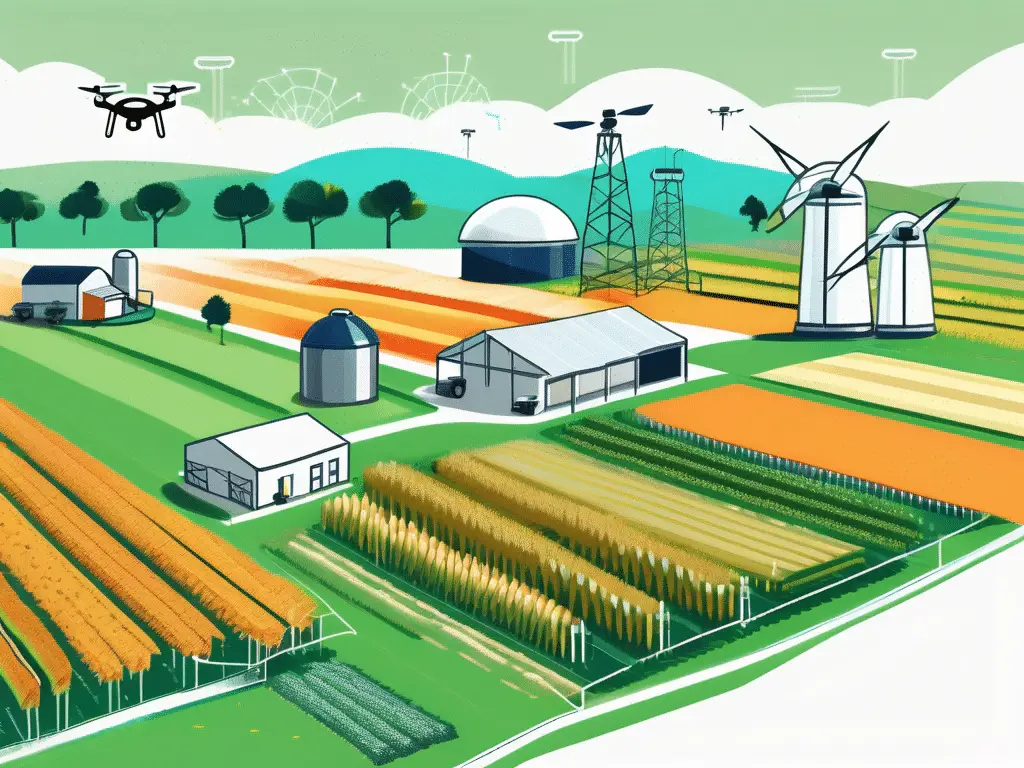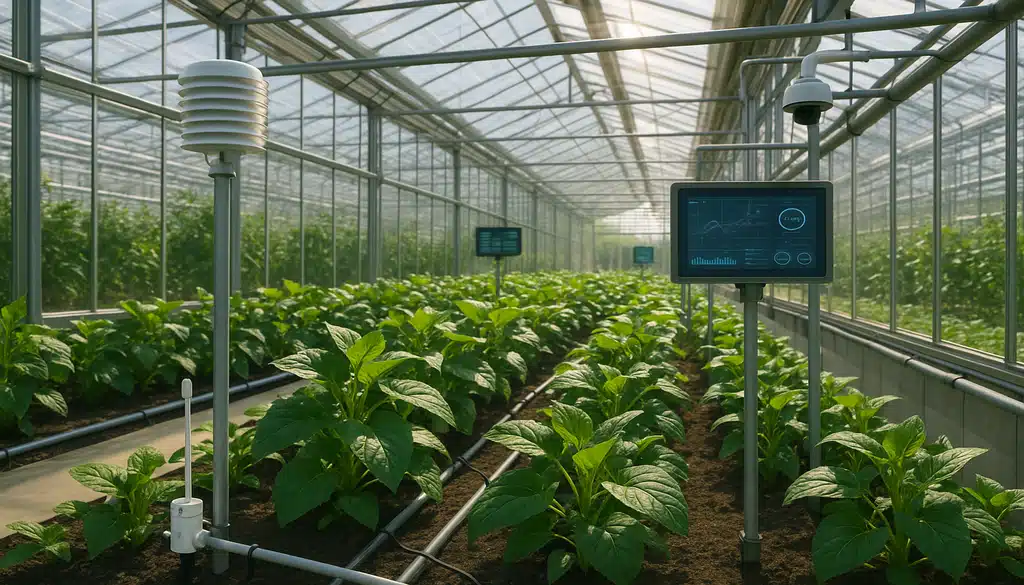
The agricultural landscape is undergoing a significant evolution, propelled by advancements in technology. One of the standout innovations contributing to this transformation is computer vision, a field of artificial intelligence that allows machines to interpret and understand visual data from the world. This article explores the vital role that computer vision plays in modern agriculture, its benefits, challenges, and its promising future.
Understanding Computer Vision
Defining Computer Vision
Computer vision refers to the ability of computers to interpret and understand visual information from the surrounding environment. By using algorithms and machine learning techniques, machines can analyze images and videos, mimicking human sight and cognition. This technology enables practical applications across various sectors, including manufacturing, healthcare, and notably, agriculture.
In agriculture, computer vision systems can process data collected from different sources such as drones, cameras, and satellites. These systems can identify and assess plant health, monitor crop growth, detect pests, and even automate harvesting tasks. For instance, by employing multispectral imaging, growers can gain insights into the chlorophyll levels of their crops, allowing them to make informed decisions regarding irrigation and fertilization. This not only enhances yield but also promotes sustainable growing practices by minimizing resource waste.
The Science Behind Computer Vision
The underlying science of computer vision involves several complex processes, including image processing, pattern recognition, and machine learning. Initially, images captured from various devices are pre-processed to enhance quality and extract essential features. These features are then analyzed through algorithms trained on vast datasets to recognize patterns and make decisions or predictions based on the visual data.
With advancements in deep learning and neural networks, computer vision systems have dramatically improved their accuracy and efficiency. These systems can now handle vast quantities of data with precision, which is crucial for effective decision-making in agriculture. Moreover, the integration of computer vision with other technologies, such as the Internet of Things (IoT), allows for real-time monitoring of crop conditions. Sensors placed throughout fields can feed data into computer vision systems, enabling growers to respond promptly to any issues, such as water stress or nutrient deficiencies, thereby optimizing their agricultural strategies and enhancing overall productivity.
The Intersection of Agriculture and Technology
The Evolution of Technology in Plant Production
Over the decades, traditional agricultural practices have been enhanced and transformed by the introduction of various technologies. From mechanized equipment to GPS-guided tractors, technology has consistently improved plant production efficiency and yield. The incorporation of computer vision represents the latest frontier in this evolution.
Today, technologies are not only streamlining nursery and greenhouse operations but are also acquiring data that can be analyzed for further insights. This data-driven approach empowers growers to make informed decisions, optimize resource usage, and ultimately increase productivity. For instance, the use of drones equipped with advanced imaging technology allows growers to monitor crop health from above, identifying areas that require attention without the need for extensive ground surveys. This not only saves time but also reduces the labor costs associated with traditional monitoring methods.
The Impact of Digital Transformation on Agriculture
Digital transformation in agriculture goes beyond just adopting new technologies; it fundamentally reshapes grower practices. Computer vision plays a critical role in this transformation by enabling precision agriculture. This approach tailors the plant production process to specific conditions, where decisions are made based on detailed analysis rather than broad assumptions.
Growers are now able to collect real-time data on soil conditions, weather patterns, and crop health, allowing them to address issues proactively. This transition not only enhances productivity but also promotes sustainable practices by minimizing waste and reducing environmental impacts. Furthermore, the integration of artificial intelligence with these technologies allows for predictive analytics, where growers can anticipate future challenges based on historical data trends. This capability is particularly beneficial in managing pest control and optimizing irrigation schedules, ensuring that resources are used efficiently and effectively.
Moreover, the rise of mobile applications has made it easier for growers to access critical information on-the-go. These apps provide instant updates on market prices, weather forecasts, and best practices, enabling growers to make swift decisions that can significantly affect their bottom line. As connectivity improves in rural areas, the potential for technology to revolutionize agriculture continues to expand, fostering a new generation of tech-savvy growers who are eager to embrace these innovations.
Computer Vision in Modern Agriculture
How Computer Vision is Applied in Agriculture
Computer vision has numerous applications in modern nursery and greenhouse operations that enhance operational efficiency. Some of these applications include:
- Crop Monitoring: Drones equipped with cameras can monitor crop health, detecting diseases and nutrient deficiencies early.
- Pest Detection: Computer vision systems can identify pests through image analysis, enabling targeted pest control measures and thereby reducing pesticide usage.
- Harvest Automation: Automated harvesters utilize computer vision to identify ripe fruits or vegetables, increasing harvest efficiency.
- Weed Identification: These systems can differentiate between crops and weeds, allowing for precise herbicide application.
Benefits of Computer Vision in Agriculture
The benefits of incorporating computer vision into grower operations are manifold:
- Increased Efficiency: Automated monitoring and analysis can save growers time and labor.
- Cost Reduction: By optimizing the use of resources, growers can significantly cut costs on fertilizers, pesticides, and water.
- Higher Yields: Computer vision can enhance crop management by providing insights that lead to improved growing decisions.
- Sustainable Practices: More efficient growing translates to less environmental impact, promoting sustainability.
Moreover, the integration of computer vision technology in agriculture is paving the way for precision growing, where data-driven decisions are made to maximize productivity. For instance, growers can utilize satellite imagery alongside computer vision to analyze large fields, allowing them to assess crop conditions over vast areas without the need for extensive manual labor. This level of analysis not only helps in identifying problem areas but also in planning interventions that are both timely and effective.
In addition to improving crop management, computer vision is also transforming livestock growing. Advanced image recognition systems can monitor animal behavior and health, detecting signs of distress or illness early. This capability enables growers to take proactive measures, ensuring the well-being of their livestock and optimizing their overall productivity. By harnessing the power of computer vision, growers are not only enhancing their operational capabilities but also contributing to a more sustainable and efficient agricultural ecosystem.
Challenges and Solutions in Implementing Computer Vision
Overcoming Obstacles in Adoption of Computer Vision
Despite the potential advantages, the adoption of computer vision in agriculture is not without challenges. Key barriers include the high initial investment for technology, the need for specialized training, and concerns regarding data privacy and security.
To address these challenges, educational initiatives must be implemented to train growers and agriculture workers on the technology and its benefits. Additionally, creating partnerships between technology providers and agricultural organizations can aid in disseminating knowledge and resources effectively. These partnerships could also facilitate access to funding opportunities, allowing smaller growers to invest in necessary technology without facing financial strain. Furthermore, local governments and agricultural extension services can play a crucial role in providing workshops and hands-on training sessions, ensuring that growers feel confident and competent in using these advanced tools.
Future Prospects of Computer Vision in Agriculture
The future of computer vision in agriculture is promising. As technology advances, we can expect even more sophisticated applications. The integration of artificial intelligence with computer vision will likely lead to smarter growing solutions, predictive analytics, and enhanced decision-making processes.
Furthermore, as data infrastructure continues to evolve, the accessibility of data for growers will improve, making it easier to harness computer vision technologies to boost agricultural productivity sustainably. Innovations such as drone technology equipped with computer vision capabilities will enable real-time monitoring of crop health and soil conditions, allowing growers to make timely interventions. Additionally, the development of mobile applications that utilize computer vision can empower growers to analyze their fields on-the-go, providing them with actionable insights right from the palm of their hand. This convergence of technology not only enhances efficiency but also fosters a more resilient agricultural ecosystem, capable of adapting to the challenges posed by climate change and resource scarcity.
The Future of Nursery and Greenhouse Operations with Computer Vision
Predictions for the Future of Agriculture Technology
Looking ahead, several trends are likely to shape the future of agriculture technology:
- Integration of IoT: Combining Internet of Things (IoT) devices with computer vision can lead to more comprehensive data collection, resulting in better-informed grower strategies.
- Enhanced Data Analytics: Advanced analytics will provide deeper insights into grow operations, allowing growers to adapt to changing conditions swiftly.
- Widespread Adoption of Automation: Agricultural sectors will see increased automation, leading to more streamlined operations and reduced labor needs.
The Role of Computer Vision in Sustainable Agriculture
Sustainable agriculture is increasingly becoming a priority as concerns about climate change and resource depletion arise. Computer vision plays a vital role here by enabling growers to monitor their practices more effectively and make environmentally-conscious decisions.
By optimizing inputs and minimizing waste, computer vision is instrumental in promoting sustainable practices. This technology not only fosters better yields but also ensures that growers can meet the needs of a growing population without compromising the health of our planet.
In conclusion, the integration of computer vision in agriculture is poised to revolutionize commercial greenhouse and nursery practices. With its transformative capabilities, it enables growers to tackle operational challenges, enhance productivity, and promote sustainability in a rapidly changing world.



